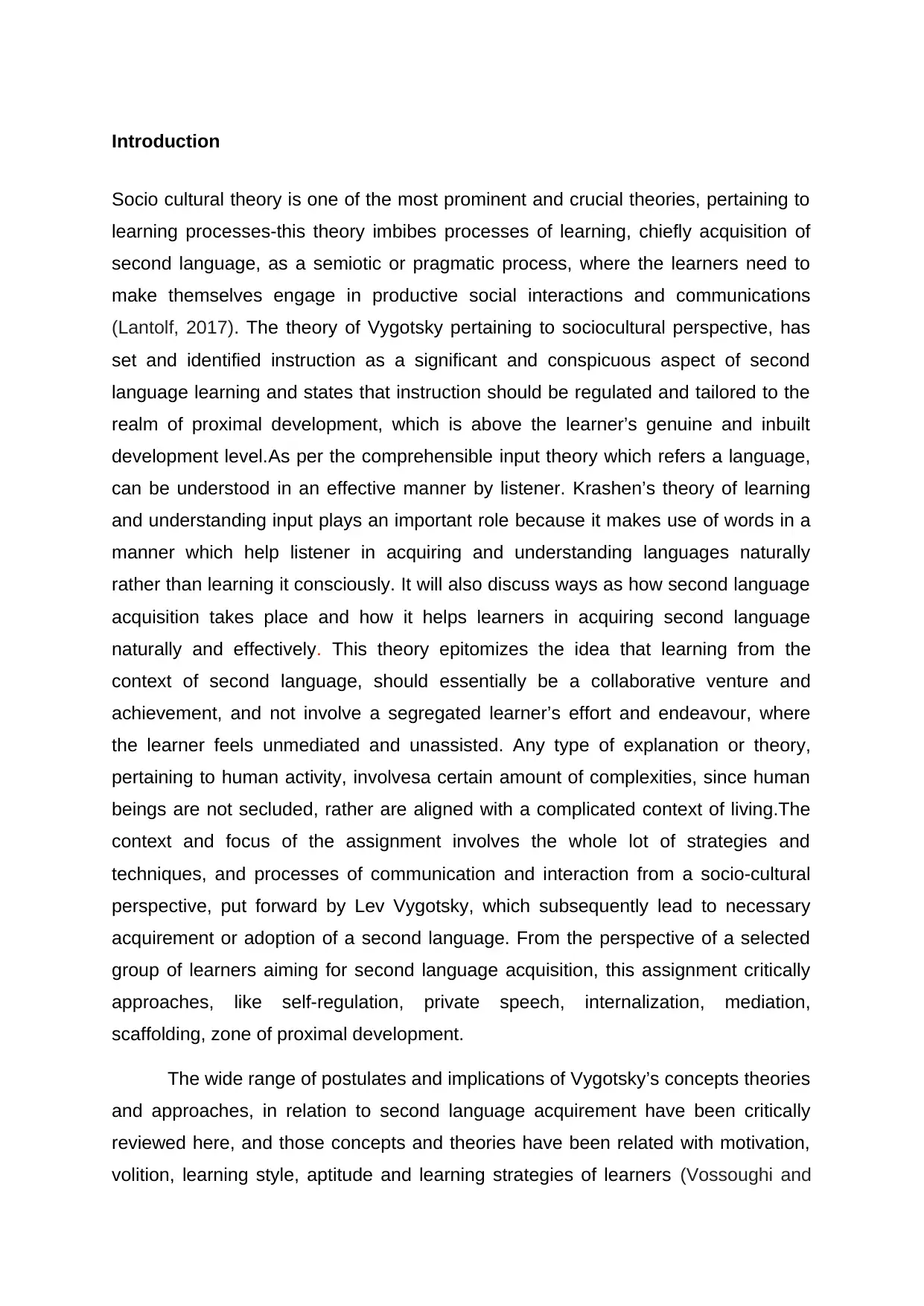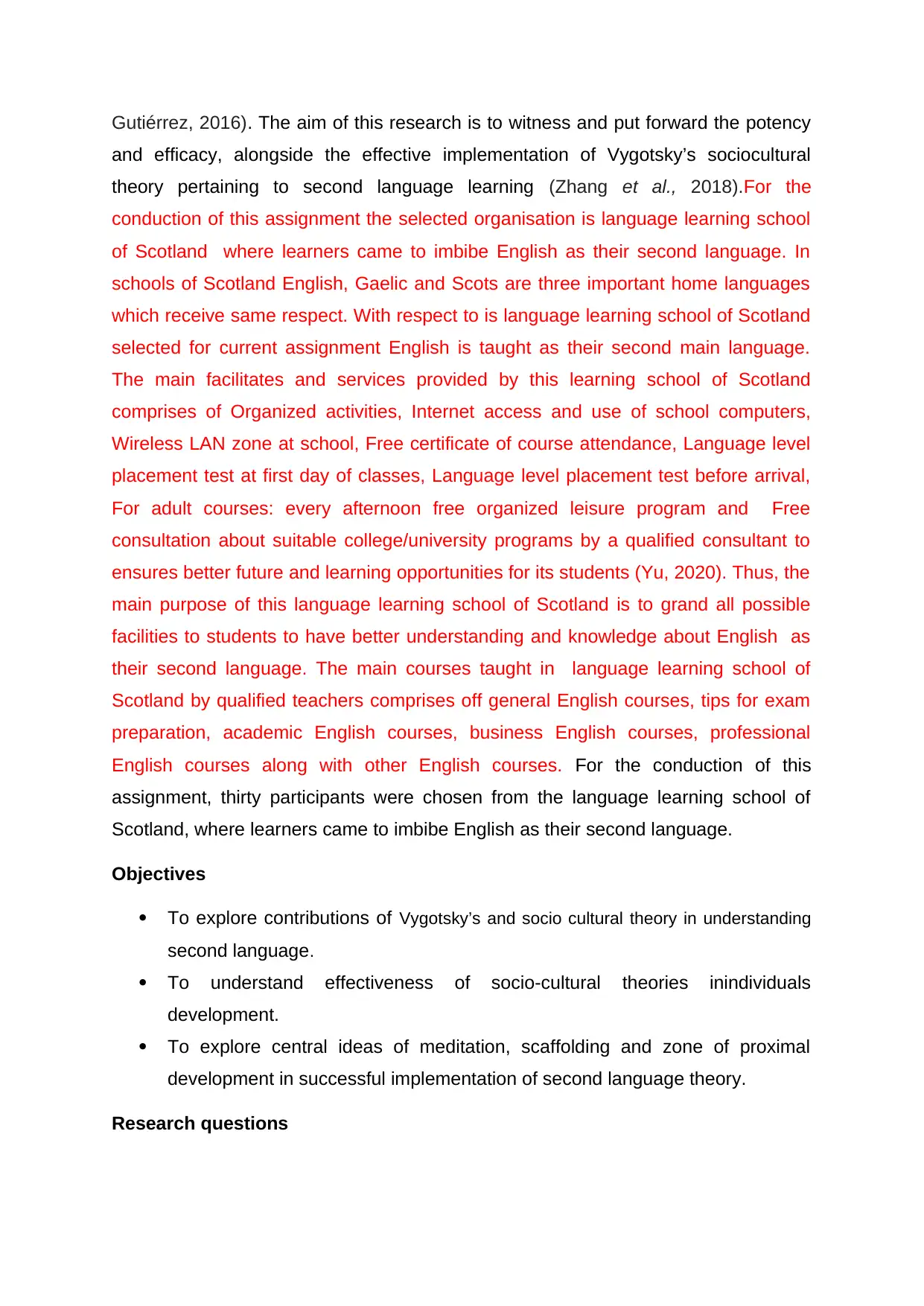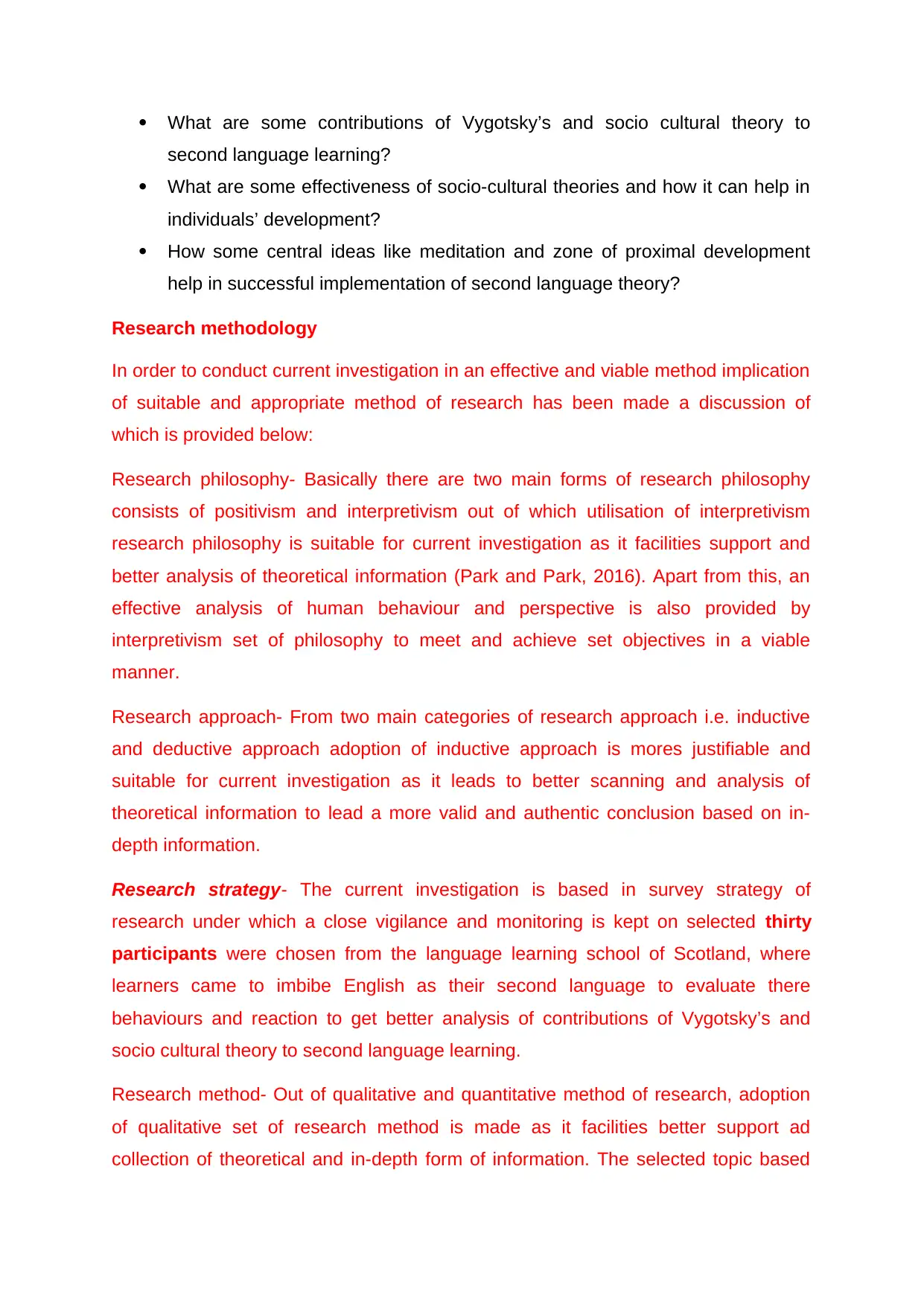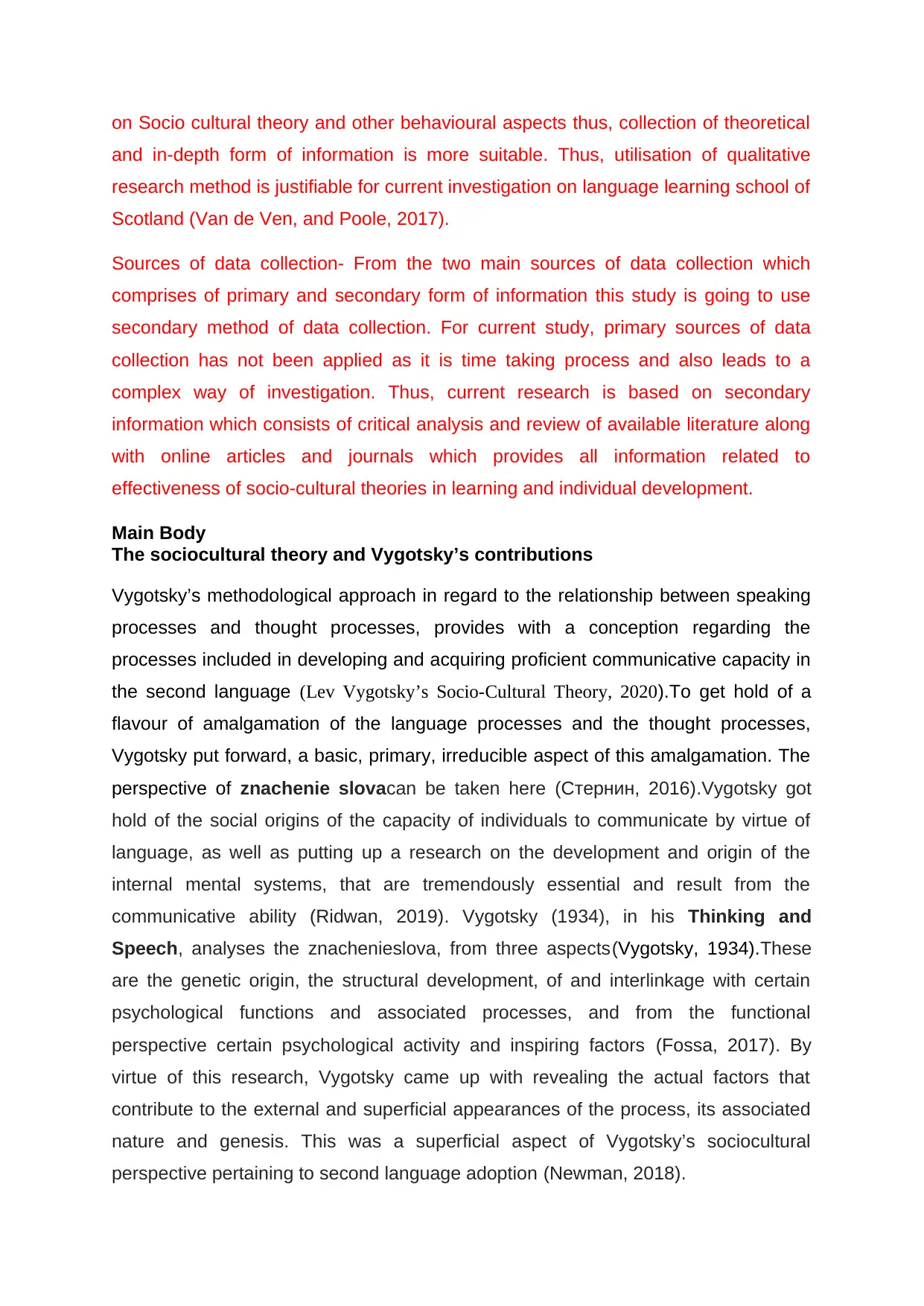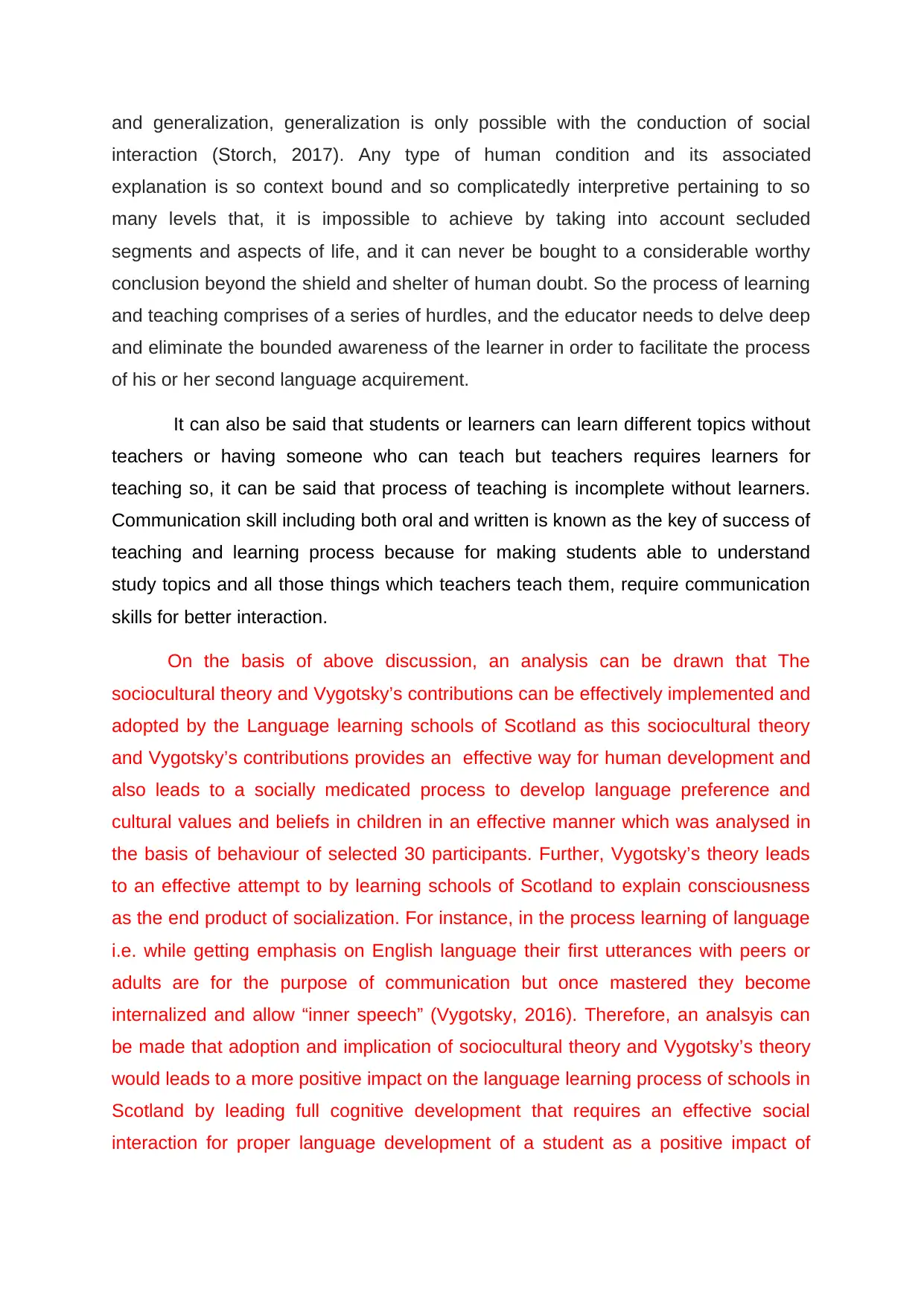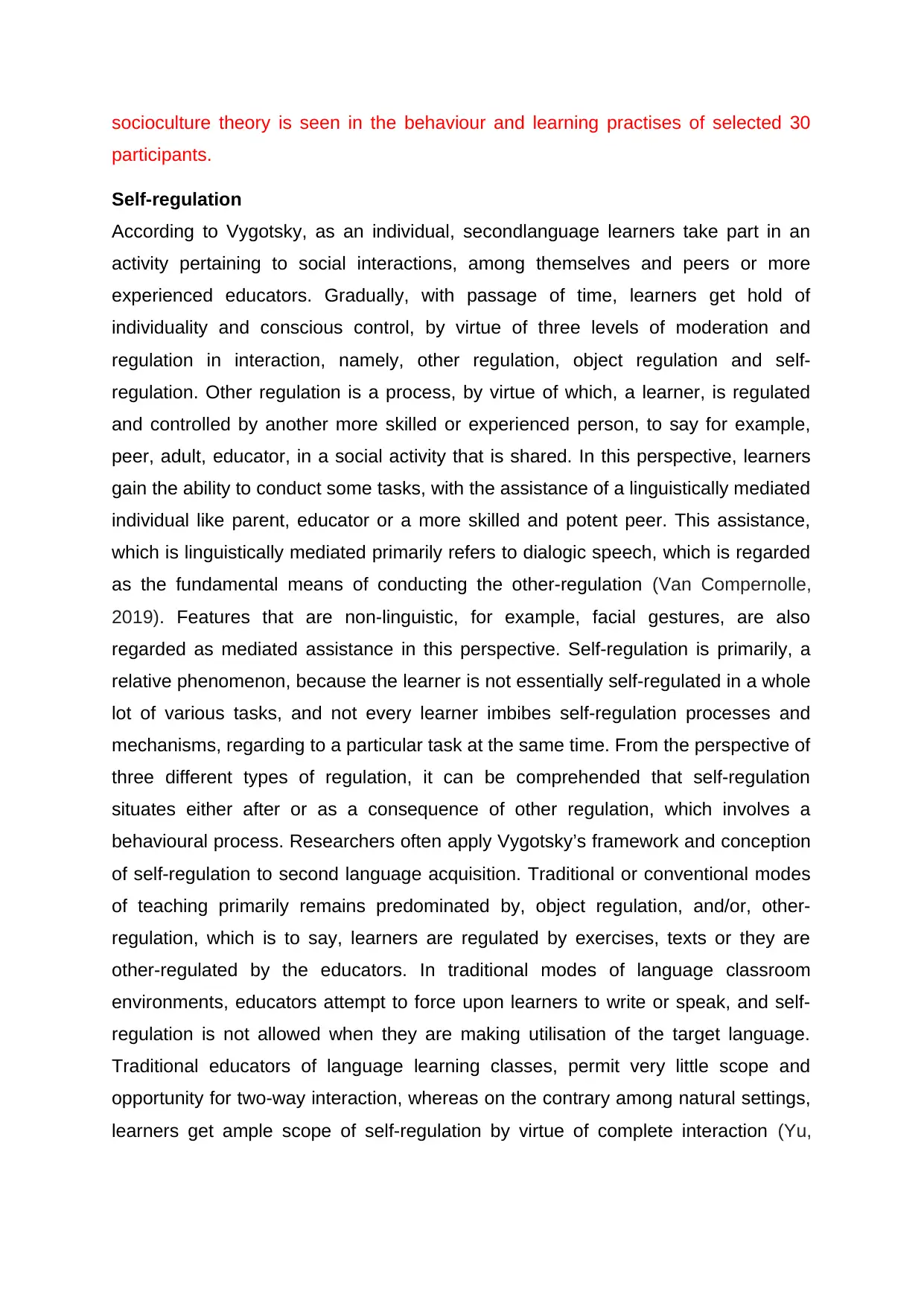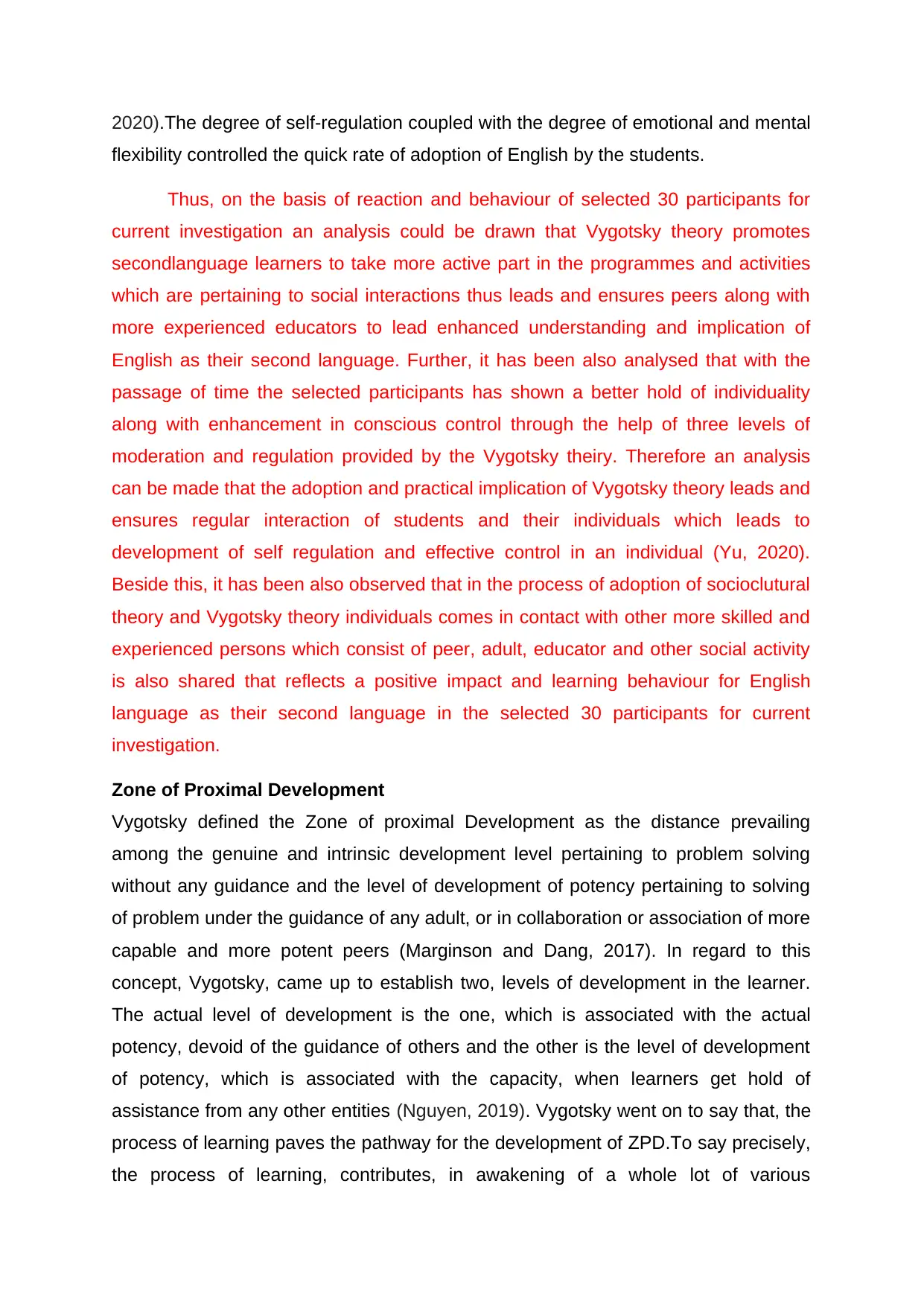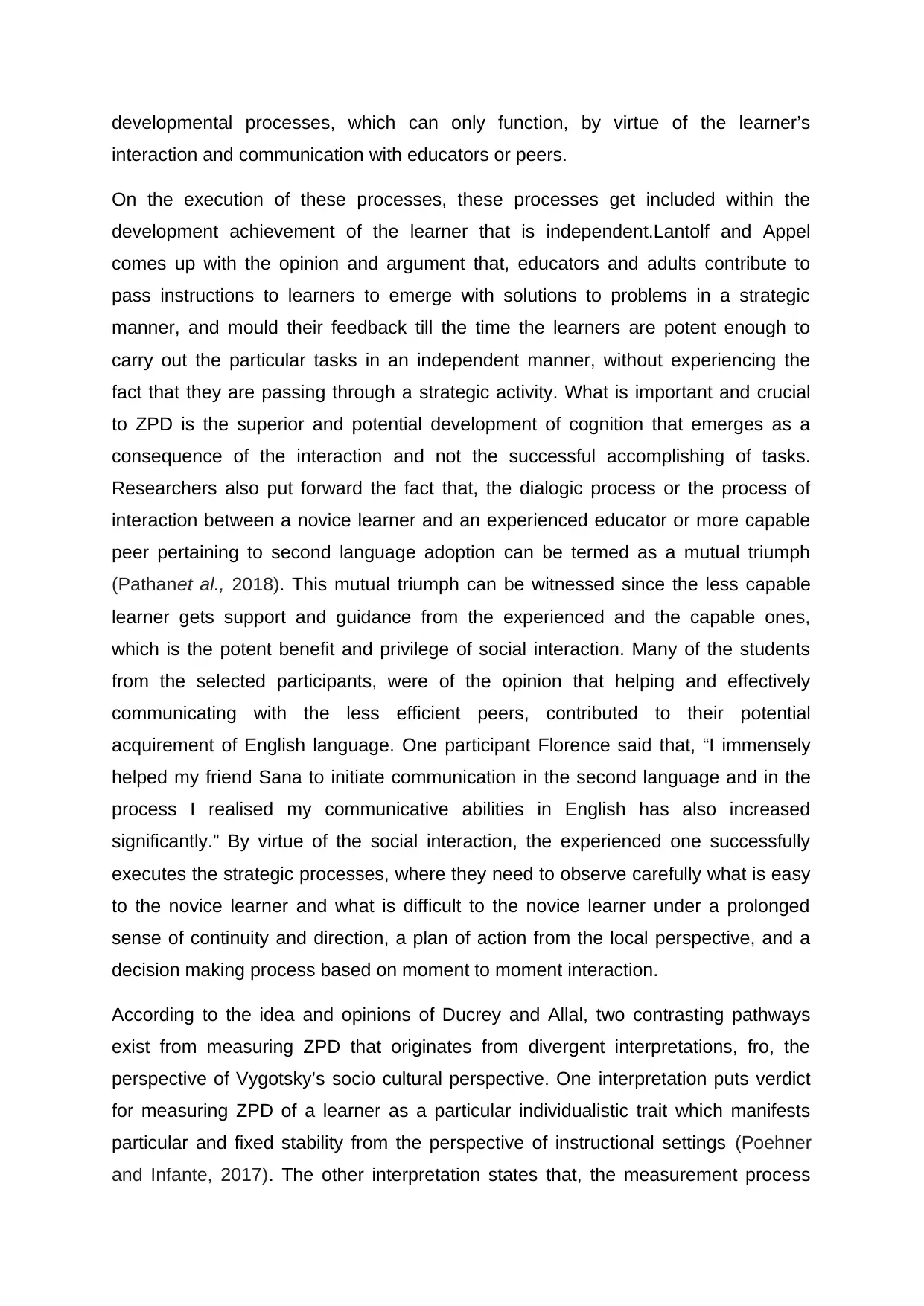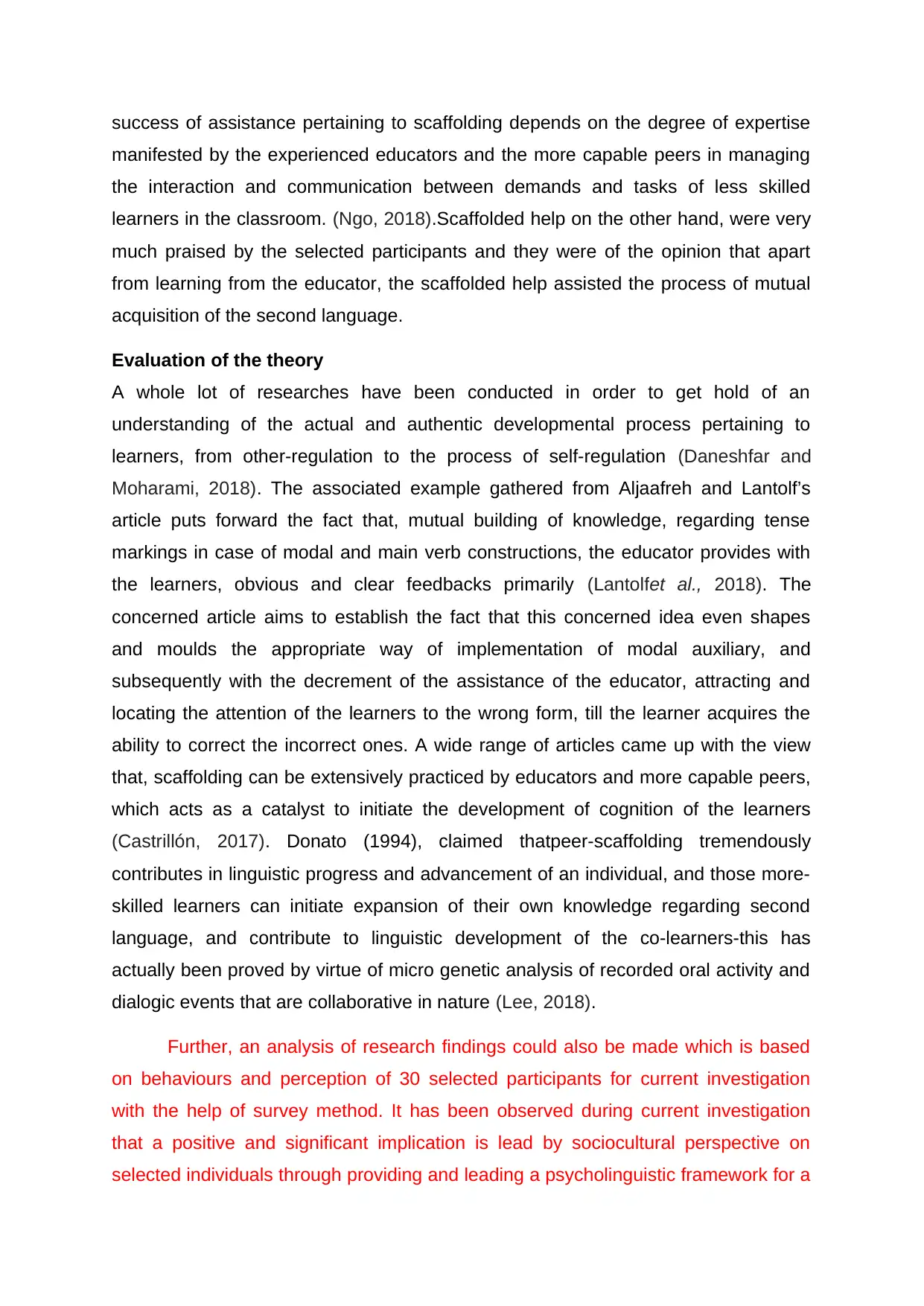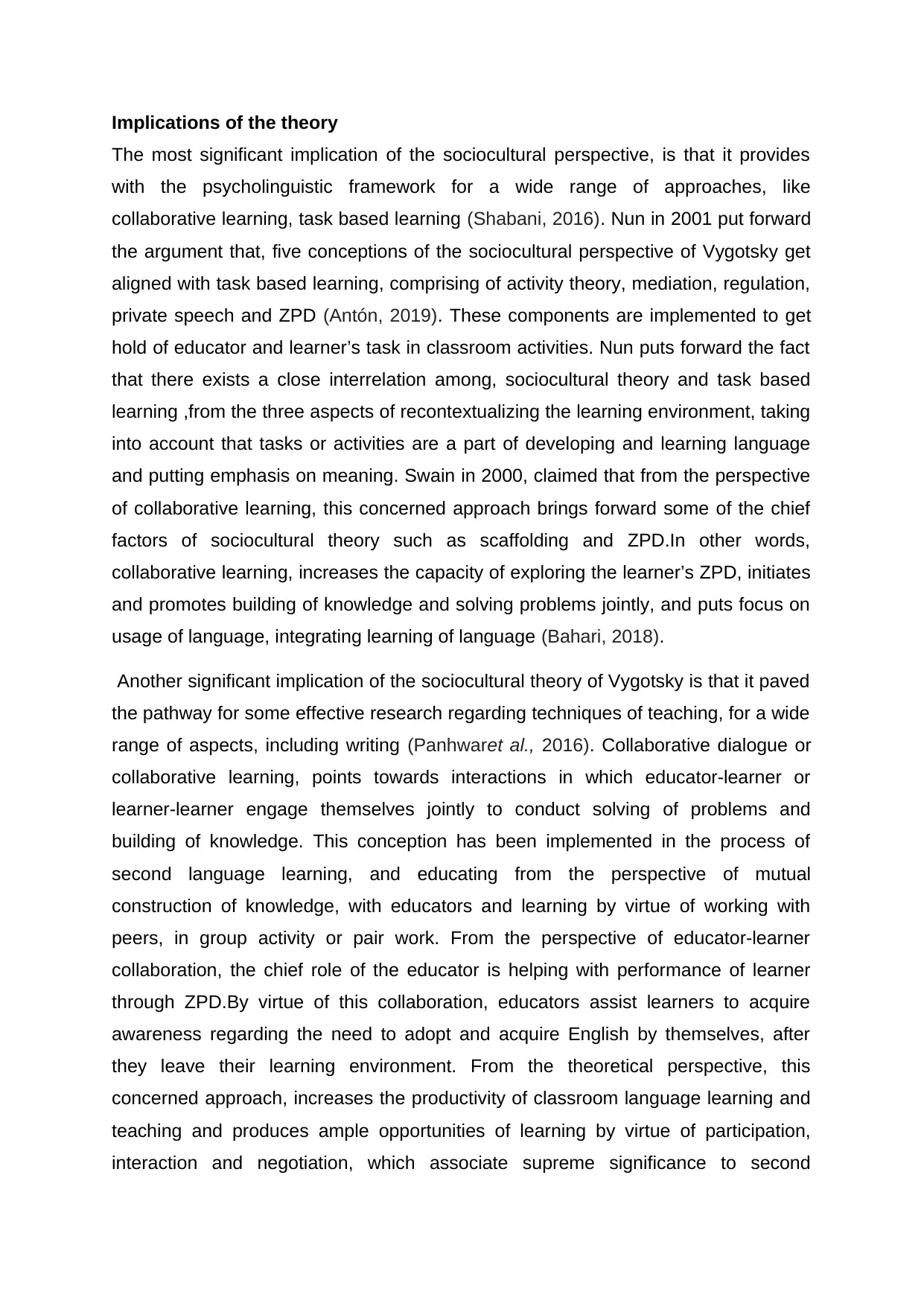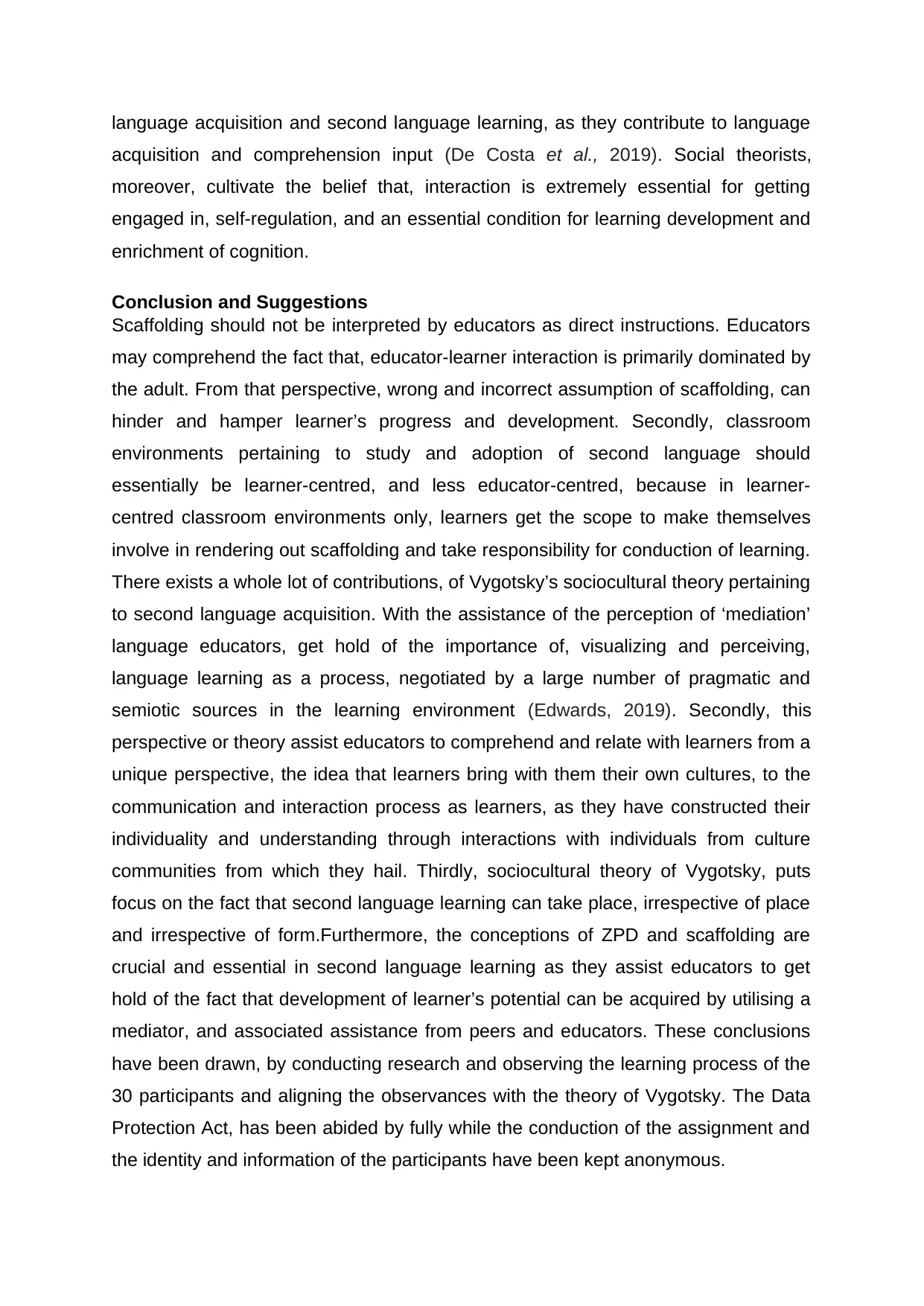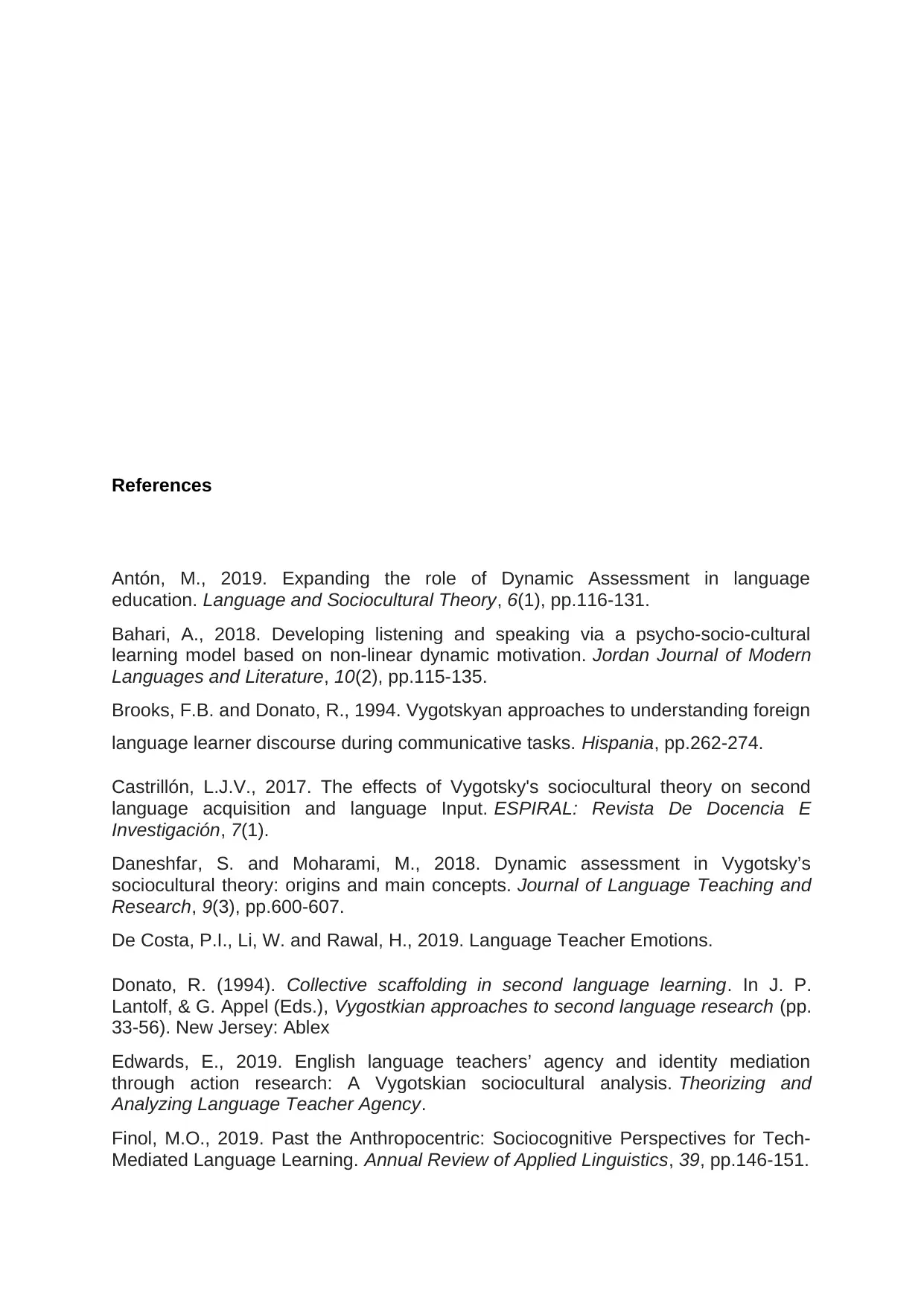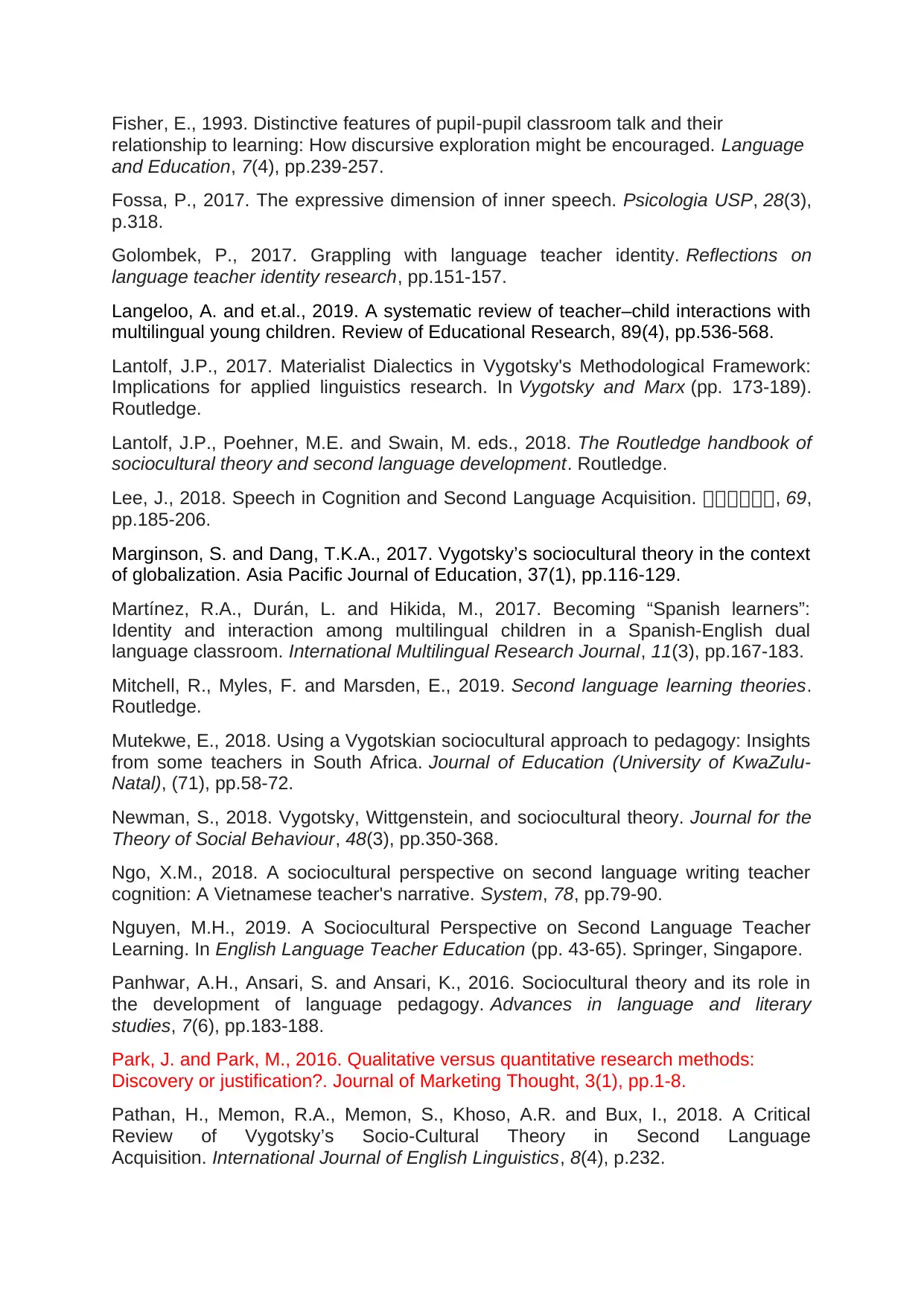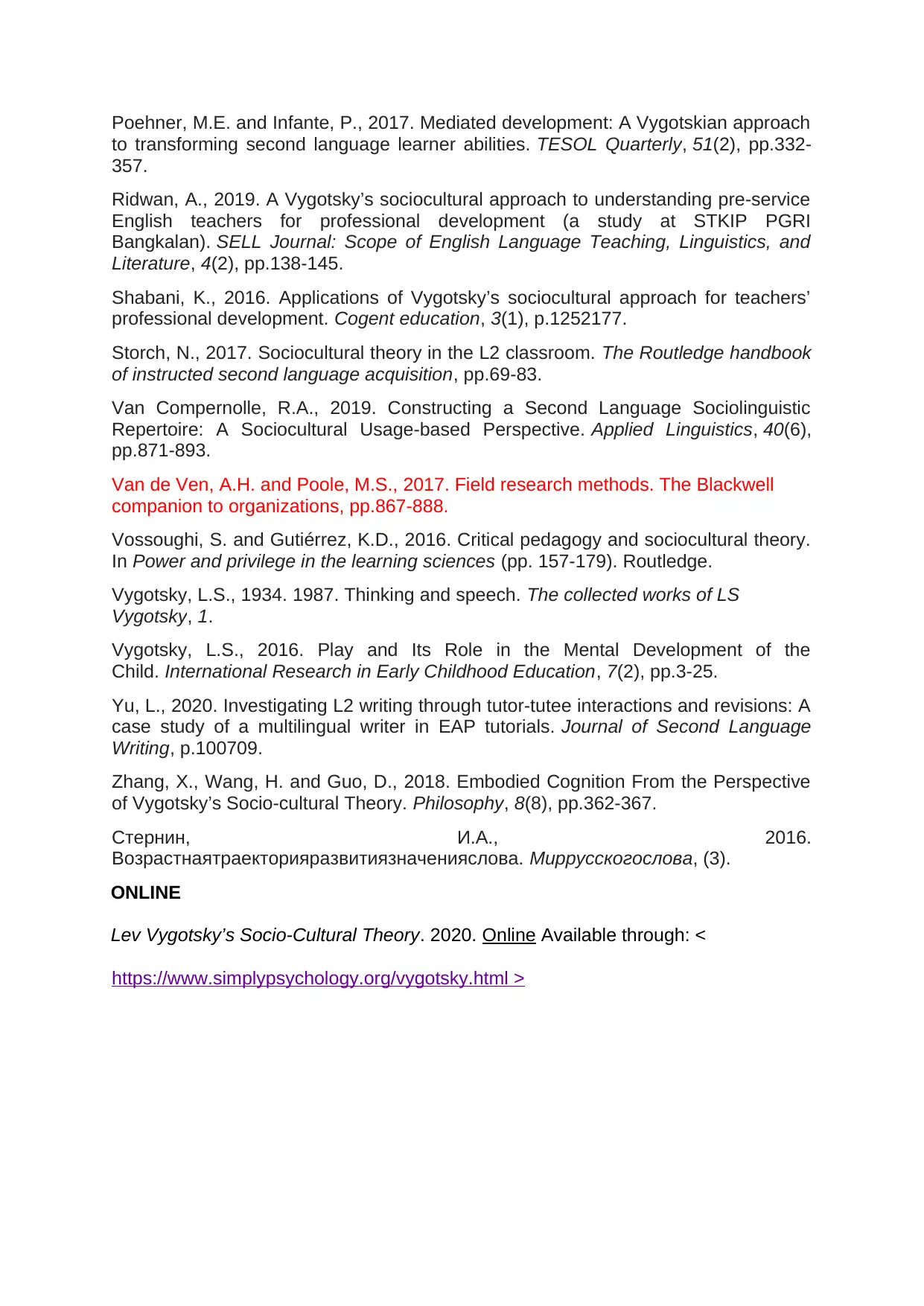This assignment explores the contributions of Vygotsky's and socio cultural theory in understanding second language learning and the effectiveness of socio-cultural theories in individual development. It discusses central ideas like mediation, scaffolding, and zone of proximal development in the successful implementation of second language theory. The research is conducted in a language learning school in Scotland, focusing on English as a second language. The objectives include exploring the contributions of Vygotsky's and socio cultural theory in second language learning and understanding the effectiveness of socio-cultural theories in individual development. The research methodology involves interpretivism research philosophy, inductive research approach, survey research strategy, and qualitative research method.
![[object Object]](/_next/static/media/star-bottom.7253800d.svg)
![[object Object]](/_next/static/media/star-bottom.7253800d.svg)
